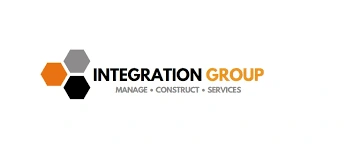Why Data Centres Are So Important in the Digital Age
In today’s increasingly connected world, data centres play a pivotal role in supporting the digital infrastructure that powers our daily lives. From the way businesses operate to how we communicate, entertain, and even manage our homes, data centres are at the heart of it all. As the demand for data-driven solutions continues to rise, the importance of these facilities has never been more pronounced. But what exactly makes data centres so crucial? In this post, we’ll explore the key reasons why data centres are indispensable to modern life and industries.
1. The Backbone of Digital Transformation
Data centres serve as the backbone of the digital transformation that is sweeping across industries. In virtually every sector, businesses are shifting toward digital solutions to streamline operations, enhance customer experiences, and stay competitive. Whether it’s cloud computing, artificial intelligence, or machine learning, these technologies rely on vast amounts of data that must be stored, processed, and retrieved in real time. Data centres provide the physical infrastructure that makes all of this possible.
For example, e-commerce platforms use data centres to process millions of transactions, while banks and financial institutions depend on them for secure data storage and rapid transaction processing. Similarly, streaming services such as Netflix and YouTube rely on data centres to deliver content to users around the world, ensuring high availability and minimal latency.
2. The Growth of Cloud Computing
Cloud computing has revolutionized how businesses and individuals store and access data. Instead of relying on physical servers in their own premises, companies can now utilize cloud services hosted in data centres to meet their IT needs. This shift offers several advantages, such as cost efficiency, scalability, and flexibility, which has fuelled the rapid adoption of cloud services across industries.
Data centres are the central hubs that enable cloud computing to function. They house thousands of servers, storage systems, and networking equipment that are crucial for hosting cloud-based services and applications. Without data centres, cloud computing as we know it would not exist. This is particularly important for businesses that rely on data-driven applications and need to scale quickly to meet customer demands.
3. Data Security and Reliability
In a world where data breaches and cyber threats are becoming more sophisticated, the security of data is paramount. Data centres provide robust security features to protect sensitive information from unauthorized access, theft, and damage. Modern data centres are equipped with physical security measures, such as biometric access controls and 24/7 surveillance, as well as digital security systems that include firewalls, encryption, and intrusion detection.
Moreover, data centres are designed to ensure reliability and uptime, which is critical for businesses that rely on continuous access to data and services. Redundant power supplies, backup systems, and failover mechanisms help minimize downtime and maintain business continuity in the event of technical issues or natural disasters. This level of reliability is essential for industries such as finance, healthcare, and telecommunications, where downtime could have severe consequences.
4. Supporting the Internet of Things (IoT)
As the Internet of Things (IoT) expands, the volume of data being generated by connected devices is growing exponentially. From smart homes and wearable technology to industrial IoT applications, these devices produce vast amounts of data that need to be processed, stored, and analysed in real time.
Data centres are critical for supporting the IoT ecosystem. They enable real-time data processing and analysis, allowing businesses to derive insights and make data-driven decisions. This is particularly important in industries such as manufacturing, agriculture, and transportation, where IoT devices are used to monitor operations, improve efficiency, and reduce costs.
5. Enabling Artificial Intelligence (AI) and Big Data
Artificial intelligence and big data analytics are transforming how businesses operate, offering new ways to enhance productivity, customer experiences, and innovation. However, both AI and big data require significant computational power and data storage, which is where data centres come in.
Data centres provide the infrastructure needed to support AI and big data initiatives. They offer the high-performance computing capabilities required for training AI models, as well as the storage capacity to handle large datasets. By facilitating the processing and analysis of massive amounts of data, data centres are driving innovation in fields such as healthcare, finance, retail, and transportation.
6. Sustainability and Energy Efficiency
As the demand for data centres grows, so does the need for energy-efficient and sustainable solutions. Data centres are notorious for consuming large amounts of energy to power their servers and cooling systems. However, many modern data centres are adopting green technologies to reduce their environmental impact.
From using renewable energy sources, such as solar and wind power, to implementing advanced cooling systems that reduce energy consumption, data centres are evolving to become more sustainable. Companies are increasingly investing in energy-efficient data centres to meet corporate sustainability goals and reduce their carbon footprint.
Data centres are the foundation of our digital world. They support everything from cloud computing and IoT to AI and big data, enabling businesses and individuals to thrive in the digital age. As our reliance on digital solutions continues to grow, the importance of data centres will only increase. Ensuring their security, reliability, and sustainability will be key to the continued success of digital transformation across industries
































